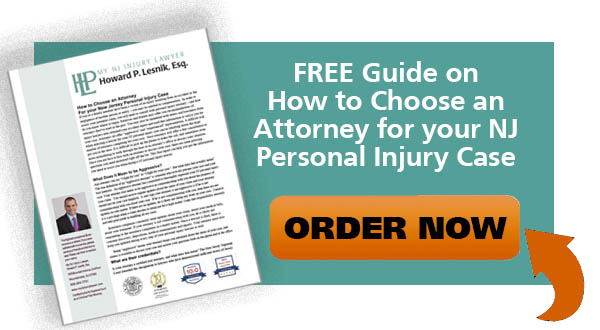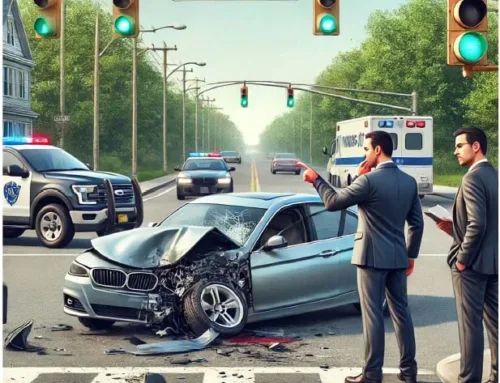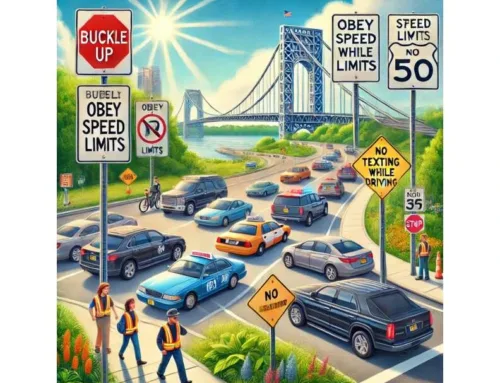“The deadliest road in America” is something you’d rather find as the catch phrase to a Hollywood movie than as part of your daily commute. However, as insurance website Zebra.com discovered when compiling their study of National Highway Traffic Safety Administration (NHTSA) data about dangerous highways, automotive fatalities spiked in 2020, reaching their highest rates in 13 years. In examining Zebra.com’s study of “The 10 most dangerous roads in the US,” we can hopefully learn not only which roads are most deadly, but why so many fatal accidents happen on those roads. And more importantly, what drivers can do to keep themselves and their passengers safer when traveling. This is always important to remember whenever we head into the holiday season, when so many people find themselves traveling long distances with their families to vacation or visit relatives. Let’s make “over the river and through the woods” safe again!

In an ominous warning to New Jersey residents, the highway that the NHTSA data revealed to be most deadly – defined here as having the most fatal accidents per 100 miles – was none other than Interstate Highway I-95, which runs the length of the state as part of its span from Maine to Florida, running down the entirety of the east coast of the US. In New Jersey, part of I-95 is the New Jersey Turnpike, overlapping with the Turnpike from exits 6 through 18. In examining the NHTSA data for 2019 (the most recent year for which complete data was available), the insurance website found that I-95 saw the most overall fatalities of any highway in the country with 284 total deaths, at a rate of 14.88 fatalities per 100 miles of roadway. While a fair number of these fatal accidents took place in eastern Florida, a substantial percentage also happened in the northeast during the winter, when dangerous weather and short daylight hours would combine to create hazardous road conditions. If this alone wasn’t sufficient cause for concern for New Jersey residents, the ninth-most dangerous highway in the study, I-80, also cuts across the breadth of northern New Jersey.
Based on the NHTSA data studied by the insurance website, all but one of the “ten most dangerous roads” were interstate highways, with the exception being the tenth-place entry, US-41, a road which runs from the Upper Peninsula of Michigan and Wisconsin down to the western coast of Florida. Six of the ten highways ran north-south, while four ran east-west.
So, what can be done with this concerning information – and the even more alarming fact that based on the data available for 2020, there was a 7.2 percent increase in automotive fatalities relative to 2019, despite the fact that Americans drove 430.2 billion fewer miles in 2020 compared to 2019, due to the COVID-19 pandemic? Although the full data concerning the crashes that took place in 2020 is still being compiled by the NHTSA, the organization does have some preliminary information about factors that may have contributed to the increase in fatal auto accidents.
- Speed. According to the DOT and NHTSA data, people have been driving faster, in both urban and rural areas. Some select metropolitan areas showed a median increase in speed of 22 percent, according to one report. The simple fact is, speeding gives a driver less reaction time when something unexpected occurs on the road and increases the force of the impact when a collision occurs, making accidents both more likely and deadlier.
- Seat Belt Use. It can be difficult for first responders to the scene of a serious accident to determine whether the occupants of a vehicle had been wearing their seat belts, so ejection from the vehicle is used as a surrogate for the rate of seat belt use, as properly belted drivers and passengers are much less likely to be ejected. Looking at rates of drivers with “unknown seat belt use” from three spans of time reveals a concerning trend. From September 10, 2019 to March 16, 2020 (just before the COVID-19 related public health lockdowns), “unknown seat belt use” rates among drivers were 14 percent. From March 17, 2020 to July 18, 2020, those rates increased to 19 percent. From July 19, 2020 to September 30, 2020 24 percent.
- Impaired Driving. During the public health emergency and lockdowns in response to the COVID-19 pandemic, use of alcohol, opioids, and cannabinoids among drivers all increased. Five trauma centers contributed data to a study showing that from July 19 to September 30, 2020, nearly one-third of all fatally injured motorists had alcohol in their systems; 26 percent of fatally injured drivers tested positive for cannabinoids, and 13 percent tested positive for opioids.
While it’s impossible to control the behavior of other drivers, taking a few simple precautions and making smart choices can substantially improve your safety on even “the most dangerous roads.”
Contact MyNJInjuryLawyer Howard P. Lesnik
If you or a loved one suffered an injury in an accident in NJ, you should contact an attorney familiar with handling these claims. An experienced NJ Injury Lawyer will know how to obtain medical records, videos, photographs, experts, locate witnesses and contact the insurance company so you can make a claim for your injuries.
My NJ Injury Lawyer Howard P. Lesnik, Esq. offers complimentary strategy sessions to address any issue or questions you may have for your injury claim in NJ.
Please contact NJ Injury Lawyer Howard Lesnik, Esq., immediately if you were involved in an accident. I personally handle NJ personal injury cases on a regular basis. Please contact me now by email, by phoning 908.264.7701, or by completing the form to the right to schedule your complimentary 30-minute strategy session.







